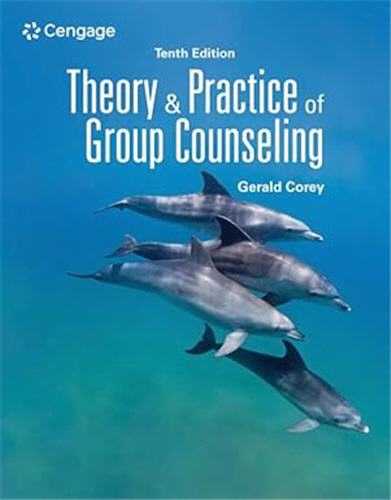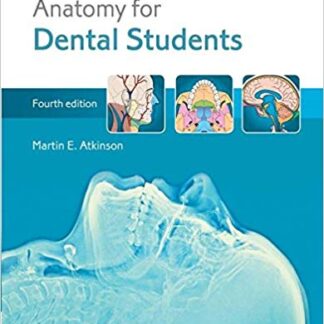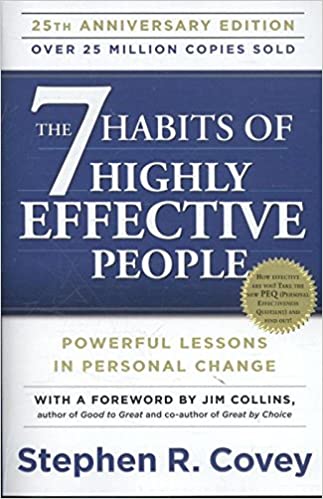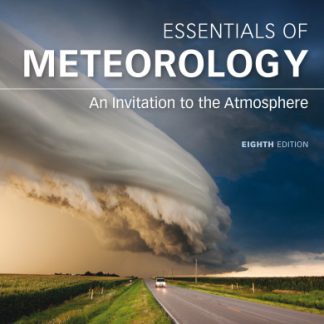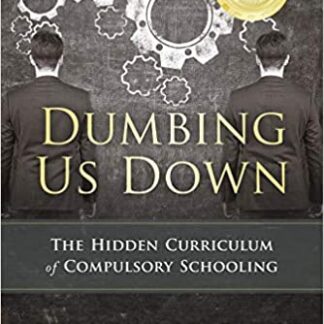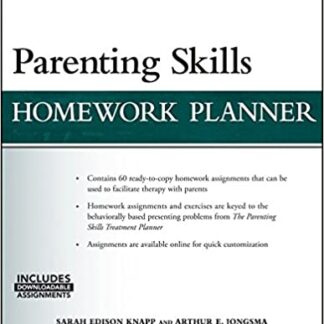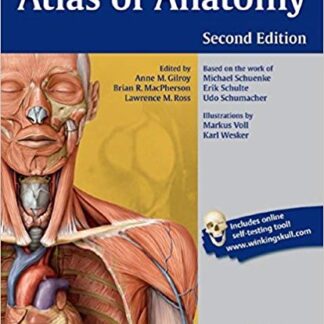Description
Theory and Practice of Group Counseling 10th Edition by Gerald Corey, ISBN-13: 978-0357622957
[PDF eBook eTextbook] – Available Instantly
- Publisher: Cengage Learning; 10th edition (March 25, 2022)
- Language: English
- 560 pages
- ISBN-10: 0357622952
- ISBN-13: 978-0357622957
Gain an in-depth overview of the ten group counseling theories with Corey’s best-selling THEORY AND PRACTICE OF GROUP COUNSELING, 10E. Using a clear, straightforward writing style, this edition illustrates how to put these theories into practice and even guides you in developing your own framework for effective group counseling with a syntheses of various aspects of the theories. New learning objectives and a consistent chapter structure help you easily grasp each theoretical concept and its relationship to group practice. This edition highlights the latest developments and most recent literature from the field with new and expanded information on accreditations, ethics and cultural sensitivity.
Table of Contents:
Cover Page
Title Page
Copyright Page
Dedication
About the Author
Preface
Acknowledgments
Part 1. Basic Elements of Group Process: An Overview
Chapter 1. Introduction to Group Work
Increased Interest in Group Work
Overview of the Counseling Group
Goals
Advantages
Value for Specific Populations
Other Types of Groups
Group Psychotherapy
Psychoeducational Groups
Task-Facilitation Groups
Brief Group Work
Group Counseling in a Multicultural Context
Perspectives on Multicultural Group Counseling
Some Guidelines for Serving Multicultural Populations
Chapter 2. Group Leadership
The Group Leader as a Person
Personality and Character
A Concluding Comment
Special Problems and Issues for Beginning Group Leaders
Initial Anxiety
Self-Disclosure
Group Leadership Skills
Active Listening
Don’t Overwhelm Yourself!
Special Skills for Opening and Closing Group Sessions
Procedures for Opening a Group Session
Procedures for Closing a Group Session
Becoming a Diversity-Competent Group Counselor
Beliefs and Attitudes
Developing Your Group Leadership Style
The Role of Research in the Practice of Group Work
The History of Group Work Research
Group Practitioners’ Perceptions of Research in Group Work
Evidence-Based Practice in Group Work
Developing a Research Orientation
Chapter 3. Ethical and Professional Issues in Group Practice
Rights of Group Participants
A Basic Right: Informed Consent
Issues in Involuntary Groups
Freedom to Leave a Group
Freedom from Coercion and Undue Pressure
Right to Confidentiality
Online Therapy Groups
Psychological Risks in Groups
Ethics of Group Leaders’ Actions
Socializing among Group Members
Impact of the Leader’s Values on the Group
Religious and Spiritual Values in Group Counseling
Ethical Issues in Multicultural Group Counseling
Becoming Aware of Your Cultural Values
Transcending Cultural Encapsulation
Uses and Misuses of Group Techniques
Group Leader Competence
Determining One’s Own Level of Competence
Professional Training Standards for Group Counselors
Three Important Adjuncts to the Training of Group Counselors
Experiential and Didactic Training for Group Counselors
Teaching Group Counseling Virtually
My Journey toward Becoming a Group Work Specialist
Liability and Malpractice
Chapter 4. Early Stages in the Development of a Group
Stage 1: Pregroup Issues—Formation of the Group
Announcing a Group and Recruiting Members
Screening and Selecting Group Members
Practical Concerns in the Formation of a Group
The Uses of a Pregroup Meeting or the Initial Session
Multicultural Considerations in Preparing Members for a Group Experience
Guidelines for Orientation and Preparation of Members
Summary of Pregroup Issues
Stage 2: Initial Stage—Orientation and Exploration
Characteristics of the Initial Stage
Primary Tasks of the Initial Stage: Inclusion and Identity
The Foundation of the Group: Trust
Role of the Group Leader at the Initial Stage
Summary of the Initial Stage
Stage 3: Transition Stage—Dealing with Reluctance
Characteristics of the Transition Stage
Difficult Group Member, or Difficult Group Leader?
Dealing with Your Own Reactions to Problematic Behaviors
Summary of the Transition Stage
Concluding Comments
Chapter 5. Later Stages in the Development of a Group
Stage 4: Working Stage—Cohesion and Productivity
Development of Group Cohesion
Characteristics of an Effective Working Group
Therapeutic Factors of a Group
Trust and Acceptance
Summary of the Working Stage
Stage Characteristics
Stage 5: Final Stage—Consolidation and Termination
Effective Ways of Terminating a Group
Dealing with Feelings
Summary of the Final Stage
Stage Characteristics
Stage 6: Postgroup Issues—Evaluation and Follow-Up
Evaluating the Process and Outcomes of a Group
The Follow-Up Group Session
Concluding Comments
References and Suggested Readings for Part One
Part 2. Theoretical Approaches to Group Counseling
Chapter 6. The Psychoanalytic Approach to Groups
Introduction
Key Concepts
Goal of the Analytic Group
Influence of the Past
The Unconscious
Anxiety
Ego-Defense Mechanisms
Resistance
Transference
Countertransference
Role and Functions of the Group Leader
Application: Therapeutic Techniques and Procedures
The Therapeutic Process
Exploring Anxiety in the Group Situation
Free Association
Interpretation
Dream Analysis
Insight and Working Through
Developmental Stages and Their Implications for Group Work
Stage 1: Infancy—Trust versus Mistrust (Birth to 12 Months)
Stage 2: Early Childhood—Autonomy versus Shame and Doubt (1 to 3 Years)
Stage 3: The Preschool Age—Initiative versus Guilt (3 to 6 Years)
Stage 4: The School Age—Industry versus Inferiority (6 to 12 Years)
Stage 5: Adolescence—Identity versus Identity Confusion (12 to 18 Years)
Stage 6: Early Adulthood—Intimacy versus Isolation (18 to 35 Years)
Stage 7: Middle Adulthood—Generativity versus Stagnation (35 to 65 Years)
Stage 8: Later Life—Integrity versus Despair (Above 65 Years)
Contemporary Trends in Psychoanalytic Group Theory
Object-Relations Theory
Attachment Theory
Borderline and Narcissistic Personality Disorders
Brief Psychodynamic Therapy
Group Theories in Action: A Psychodynamic Application
Applying the Psychoanalytic Approach to Group Work in Schools
Applying the Psychoanalytic Approach with Multicultural Populations
Evaluation of the Psychoanalytic Approach to Groups
Contributions and Strengths of the Approach
Modifications of Classical Analytic Practice
Limitations of the Approach
Self-Reflection and Discussion Questions
Where to Go from Here
Recommended Supplementary Readings
References and Suggested Readings
Chapter 7. Adlerian Group Counseling
Introduction
Key Concepts
Overview of the Adlerian View of the Person
Holism
Teleology
Phenomenology
Creativity and Choice
Community Feeling and Social Interest
Inferiority/Superiority
Role of the Family
Style of Life
Role and Functions of the Group Leader
Stages of the Adlerian Group
Stage 1: Establishing and Maintaining Cohesive Relationships with Members
Stage 2: Analysis and Assessment (Exploring the Individual’s Dynamics)
Stage 3: Awareness and Insight
Stage 4: Reorientation and Reeducation
Application: Therapeutic Techniques and Procedures
Rationale for a Group Approach
Applications to Brief Group Therapy
Group Theories in Action: An Adlerian Application
Applying the Adlerian Approach to Group Work in Schools
Applying the Adlerian Approach with Multicultural Populations
Evaluation of the Adlerian Approach to Groups
Contributions and Strengths of the Approach
Integration with Other Approaches
Limitations of the Approach
Self-Reflection and Discussion Questions
Where to Go from Here
Recommended Supplementary Readings
References and Suggested Readings
Chapter 8. Psychodrama in Groups
Introduction
Key Concepts
Creativity
Spontaneity
Working in the Present Moment
Encounter
Tele
Surplus Reality
Catharsis and Insight
Reality Testing
Role Theory
Role and Functions of the Psychodrama Group Leader
The Basic Elements of Psychodrama
The Protagonist (Main Player)
The Auxiliary Egos (Supporting Players)
The Audience
The Stage
Phases of the Psychodrama Process
The Warm-Up Phase
The Action Phase
The Sharing and Discussion Phase
Application: Therapeutic Techniques and Procedures
Self-Presentation
Role Reversal
Double
Soliloquy
The Empty Chair
Mirror Technique
Future Projection
The Magic Shop
Replay
Role Training
Group Theories in Action: A Psychodrama Application
Applying Psychodrama to Group Work in Schools
Applying Psychodrama with Multicultural Populations
Evaluation of Psychodrama
Contributions and Strengths of the Approach
Potential for Integration with Other Approaches
Limitations of the Approach
Training as a Safeguard
Self-Reflection and Discussion Questions
Where to Go from Here
Recommended Supplementary Readings
References and Suggested Readings
Chapter 9. The Existential Approach to Groups
Introduction
Historical Background of Existential Psychotherapy
The Purpose of an Existential Group
Key Concepts
Self-Awareness
Self-Determination, Freedom, and Personal Responsibility
Existential Anxiety
Death and Nonbeing
The Search for Meaning
The Search for Authenticity
Aloneness and Relatedness
Role and Functions of the Group Leader
Application: Therapeutic Techniques and Procedures
Phases of an Existential Group
Group Theories in Action: An Existential Application
Applying the Existential Approach to Group Work in Schools
Applying the Existential Approach with Multicultural Populations
Evaluation of the Existential Approach to Groups
Contributions and Strengths of the Approach
Limitations of the Approach
Self-Reflection and Discussion Questions
Where to Go from Here
Recommended Supplementary Readings
References and Suggested Readings
Chapter 10. The Person-Centered Approach to Groups
Introduction
Historical Background
The Relationship between Existential Therapy and Humanistic Psychology
Key Concepts
Trust in the Group Process
The Therapeutic Conditions for Growth
Genuineness
Unconditional Positive Regard and Acceptance
Empathy
Barriers to Effective Therapy
Role and Functions of the Group Leader
Stages of a Person-Centered Group
Characteristics of the Group
Unfolding of the Group Process
Some Outcomes of the Group Experience
Person-Centered Expressive Arts in Groups
Principles of Expressive Arts Therapy
Conditions That Foster Creativity
Offering Stimulating and Challenging Experiences
Guidelines for Creative Expression in Groups and in Community Building
Applications of Person-Centered Expressive Arts
Summary Comments
Application: Therapeutic Techniques and Procedures
Diversity of Methods and Therapeutic Styles
Areas of Application of the Person-Centered Approach to Groups
Group Theories in Action: Person-Centered Application
Applying the Person-Centered Approach to Group Work in Schools
Applying the Person-Centered Approach with Multicultural Populations
Evaluation of the Person-Centered Approach to Groups
Contributions and Strengths of the Approach
Limitations of the Approach
Self-Reflection and Discussion Questions
Where to Go from Here
Major Associations: The Person-Centered Approach
Training in the Person-Centered Approach
Recommended Supplementary Readings
References and Suggested Readings
Chapter 11. Gestalt Therapy in Groups
Introduction
The Evolution of Gestalt Group Therapy
Key Concepts
Therapeutic Goals
Basic Principles of Gestalt Therapy
Awareness
The Here-and-Now
Unfinished Business
Contact and Disturbances to Contact
Energy and Blocks to Energy
Role and Functions of the Group Leader
The Role of the Relationship
Stages of a Gestalt Group
First Stage
Second Stage
Third Stage
Application: Therapeutic Techniques and Procedures
The Role of Experiments
Paying Attention to Language
Nonverbal Language
Experiments with Internal Dialogues
Making the Rounds
Fantasy Approaches
Rehearsal
The Exaggeration Technique
Dream Work in Groups
Group Theories in Action: Gestalt Therapy Application
Applying Gestalt Therapy to Group Work in Schools
Applying Gestalt Therapy with Multicultural Populations
Evaluation of the Gestalt Approach to Groups
Contributions and Strengths of the Approach
Limitations of the Approach
Self-Reflection and Discussion Questions
Where to Go from Here
Videos on Gestalt Therapy
Other Resources
Journals
Recommended Supplementary Readings
References and Suggested Readings
Chapter 12. Cognitive Behavioral Approaches to Groups
Introduction
Key Concepts
Behavioral Assessment
Precise Therapeutic Goals
Treatment Plan
Objective Evaluation
Role and Functions of the Group Leader
Stages of a Cognitive Behavioral Group
Initial Stage
Working Stage: Treatment Plan and Application of Techniques
Final Stage
Application: Therapeutic Techniques and Procedures
Social Skills Training Groups
Cognitive Therapy Groups
Stress Management Training in Groups
Mindfulness and Acceptance Approaches in Cognitive Behavior Therapy
Group Theories in Action: A CBT Application
Applying the Cognitive Behavioral Approach to Group Work in Schools
Applying the Cognitive Behavioral Approach with Multicultural Populations
Evaluation of the Cognitive Behavioral Approaches to Groups
Contributions and Strengths of the Approach
Limitations of the Cognitive Behavioral Approach
Self-Reflection and Discussion Questions
Where to Go from Here
Recommended Supplementary Readings
References and Suggested Readings
Chapter 13. Rational Emotive Behavior Therapy in Groups
Introduction
Key Concepts
Some Hypotheses and Assumptions of REBT
Origins of Emotional Disturbance
The A-B-C Theory
Learning to Dispute Irrational Beliefs
Goals of a REBT Group
Role and Functions of the Group Leader
Application: Therapeutic Techniques and Procedures
Cognitive Methods of REBT in Groups
Emotive Methods in REBT Groups
Behavioral Methods in REBT Groups
Group Theories in Action: REBT Application
Applying Rational Emotive Behavior Therapy to Group Work in Schools
Applying Rational Emotive Behavior Therapy with Multicultural Populations
Evaluation of Rational Emotive Behavior Therapy in Groups
Contributions and Strengths of the Approach
Limitations of the Approach
Self-Reflection and Discussion Questions
Where to Go from Here
Recommended Supplementary Readings
References and Suggested Readings
Chapter 14. Choice Theory/Reality Therapy in Groups
Introduction
Key Concepts
Human Needs and Purposeful Behavior
Existential/Phenomenological Orientation
Total Behavior
The Essence of Choice Theory
Role and Functions of the Group Leader
Application: Therapeutic Techniques and Procedures
Stages of a Reality Therapy Group
The Counseling Environment
Procedures in a Reality Therapy Group: The WDEP System
Group Theories in Action: A Reality Therapy Application
Applying Reality Therapy to Group Work in Schools
Applying Reality Therapy with Multicultural Populations
Evaluation of Choice Theory/Reality Therapy in Groups
Contributions and Strengths of the Approach
Limitations of the Approach
Self-Reflection and Discussion Questions
Where to Go from Here
Recommended Supplementary Readings
References and Suggested Readings
Chapter 15. Solution-Focused Brief Therapy and Motivational Interviewing in Groups
Introduction
Key Concepts of SFBT
Positive Orientation
Focus on Solutions, Not Problems
Looking for What Is Working
Basic Assumptions Guiding Practice
Role and Functions of the Group Leader
A Not-Knowing Position
Creating a Therapeutic Partnership
The Process of the Solution-Focused Group
Steps in the Change Process
Creating Member Goals
Terminating
Application: Therapeutic Techniques and Procedures
Pretherapy Change
Questioning
Exception Questions
The Miracle Question
Scaling Questions
Formula First Session Task
Group Leader Feedback to Group Members
Group Theories in Action: A Solution-Focused Brief Therapy Application
Applying SFBT to Group Work in Schools
Applying Solution-Focused Brief Therapy with Multicultural Populations
Motivational Interviewing
The MI Spirit
The Principles and Clinical Strategies of Motivational Interviewing
Concepts Common to Solution-Focused Brief Therapy and Motivational Interviewing
Motivational Interviewing as an Integrative Approach
Evaluation of Solution-Focused Brief Therapy and Motivational Interviewing in Groups
Contributions and Strengths of Solution-Focused Brief Therapy
Contributions and Strengths of Motivational Interviewing
Limitations of Solution-Focused Brief Therapy
Limitations of Motivational Interviewing
Self-Reflection and Discussion Questions
Where to Go from Here
Recommended Supplementary Readings
References and Suggested Readings
Part 3. Integration and Application
Chapter 16. Comparisons, Contrasts, and Integration
Introduction
The Goals of Group Counseling: Various Perspectives
A Snapshot of the Goals Associated with Various Theories
Role and Functions of the Group Leader: Various Perspectives
Degree of Structuring and Division of Responsibility: Various Perspectives
The Use of Techniques: Various Perspectives
Group Work in a Multicultural Context: Various Perspectives
Applications of an Integrative Model
Theories Applied to the Pregroup Stage
Theories Applied to the Initial Stage
Theories Applied to the Transition Stage
Theories Applied to the Working Stage
Theories Applied to the Final Stage
Theories Applied to Postgroup Issues
The Pros and Cons of an Integrative Model
Summary and Review Tables
Gerald Corey, Ed.D., ABPP, is professor emeritus of human services and counseling at California State University at Fullerton. Presently, he is a distinguished visiting professor of counseling at the University of Holy Cross in New Orleans, where he teaches intensive courses in counseling theories, group counseling and ethics. He received his doctorate in counseling from the University of Southern California and was awarded an honorary doctorate in humane letters from National Louis University. Dr. Gerald Corey is a diplomate in counseling psychology (American Board of Professional Psychology), a licensed psychologist and a National Certified Counselor. He is a fellow of the American Psychological Association (Division 17, Counseling Psychology and Division 49, Group Psychotherapy), the American Counseling Association and the Association for Specialists in Group Work. Both Gerald and Marianne Corey have received the Lifetime Achievement Award from the American Mental Health Counselors Association as well as the Eminent Career Award from the Association for Specialists in Group Work. In addition, he received the Outstanding Professor of the Year Award from California State University at Fullerton and the Thomas Hohenshil National Publications Award from the American Counseling Association. He is the author or co-author of 15 textbooks in counseling currently in print, along with more than 60 journal articles and book chapters. Several of his books have been translated into other languages. THEORY AND PRACTICE OF COUNSELING AND PSYCHOTHERAPY has been translated into Arabic, Indonesian, Portuguese, Turkish, Korean and Chinese. THEORY OF PRACTICE AND GROUP COUNSELING has been translated into Korean, Chinese, Spanish and Russian. ISSUES AND ETHICS IN THE HELPING PROFESSIONS has been translated into Korean, Japanese and Chinese.
What makes us different?
• Instant Download
• Always Competitive Pricing
• 100% Privacy
• FREE Sample Available
• 24-7 LIVE Customer Support

